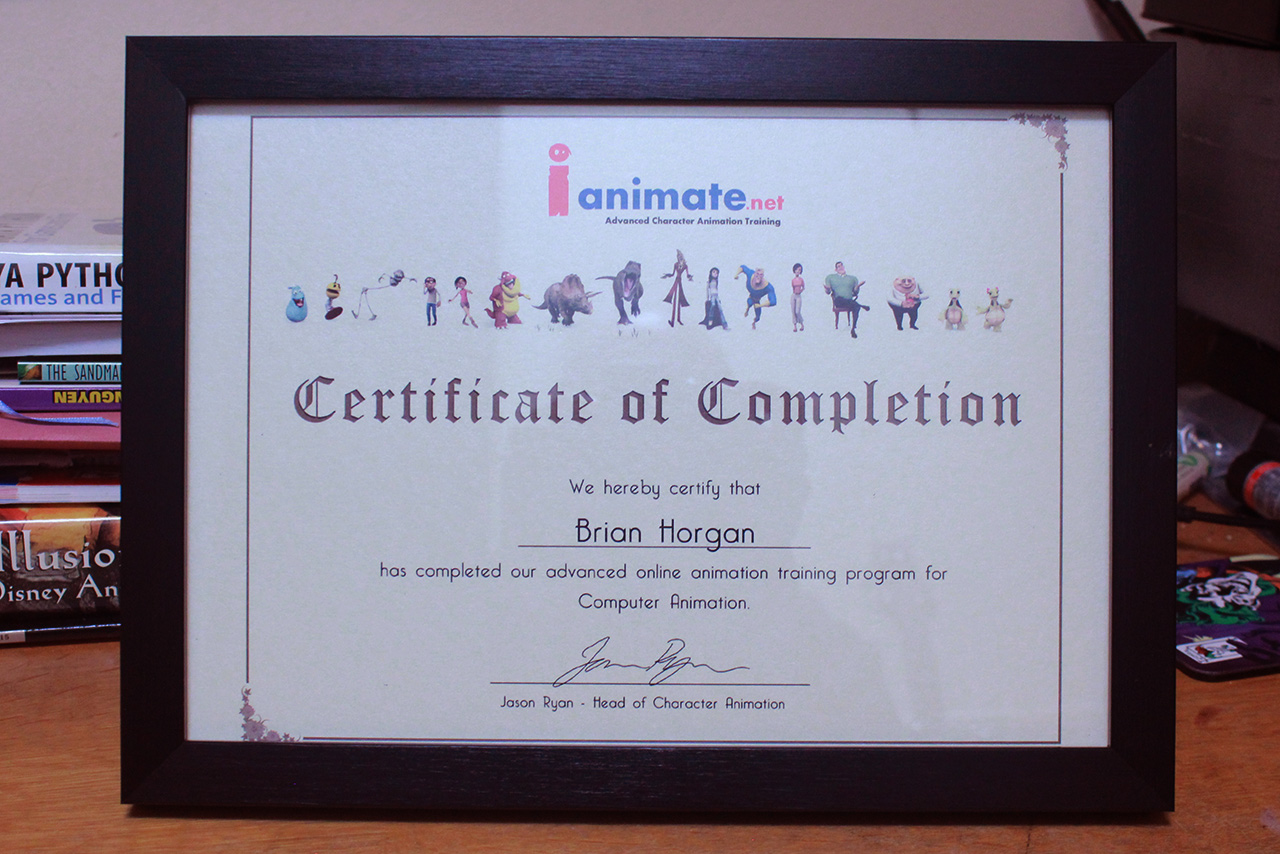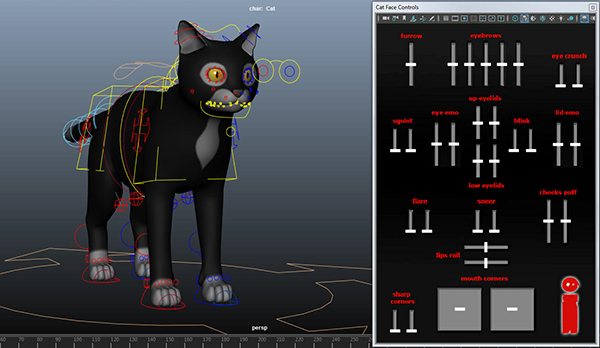Category Archives: iAnimate Assignments
Prowling Panther – iAnimate CWS1
A sequence of shots I animated during iAnimate Creature Workshop 1. Many thanks to our teacher Marco Foglia and my fellow students. Really enjoyed working on this and learned a lot.
Jason Ryan master class
Jason Ryan demos bhGhost
Jason Ryan from iAnimate/Disney/Dreamworks/Cinesite made a great video showing how he uses my ghosting tool for Maya.
Tips and Tricks for Animating in Maya, great demo and awesome plugin by Brian Horgan.
Posted by iAnimate.net on Friday, March 11, 2016
I’m certified!
iAnimate shots 2015
These are shots I animated while studying with iAnimate this year. I had a lot of fun and learned a lot while working on them. Big thanks to my awesome teacher Ted Ty and to all at iAnimate. Hope you enjoy them!
Shadow Face Rig for iAnimate
Today I delivered the finished version of a brand new rig for the iAnimate character ‘Shadow’. I re-rigged the body a while back and now I’ve added a very flexible face rig too which features both a GUI and on-face controls. The rig runs at real-time speeds and should be very fun to animate with. It was a little daunting building a rig to be used by an entire animation school but I learned a lot while building it and I’m pretty proud of it now and excited to see what the students do with it. I have a couple of ideas for shots I’d like to try with it myself..
iAnimate new feature reel
New iAnimate feature reel! So proud that one of my shots made the cut, so much great work on it from my fellow students!
One Vision – Simplicity Vs Complexity
 So I finished the last feature animation workshop at iAnimate yesterday, I had an absolute blast there, such a great experience. I’m still addressing notes from our last critique class and polishing the shots I plan to render and put on online but I’m also trying to boil down what it is I want to take away most from my studies at iAnimate.
So I finished the last feature animation workshop at iAnimate yesterday, I had an absolute blast there, such a great experience. I’m still addressing notes from our last critique class and polishing the shots I plan to render and put on online but I’m also trying to boil down what it is I want to take away most from my studies at iAnimate.
Over the course of the workshops there I’ve learned a lot of different things, ranging from small workflow tricks, to much larger realizations about what we are really trying to achieve when we animate characters.
I’ve learned things about myself too, about my own strengths and weaknesses and tendencies. These lessons are not always fun but they make a big difference in the long run.
I’ve learned to stop being so precious about my work. I’ll delete a section of animation now and re-block it without a thought whereas previously I’d resist changes, largely out of the fear that I may not get the same or better results twice! With experience and confidence that one gets much easier.
I’ve learned to ditch my self-consciousness on camera and give myself over the process of shooting acting reference for animation. The more I’ve done this the more I’ve enjoyed it and the better the resulting animation has turned out. I now own two cameras and an orange wig and all of those have turned out to be very useful tools for me.
But probably the biggest thing I’ve learned is – stop tweaking!
I used to be a big graph editor guy, I guess it suits the logical side of my brain, I see smooth curves and I hope the animation will look smooth too. But what I’ve often found is that when I’m trying to get an action working I’d have a tendency to go in and start pulling curves around trying to get something working. I’d jump from key to key pulling tangents and changing key values and scrubbing the timeline after each change to see what improvement (if any!) I’d just made as a result.
But often when doing this I’d disappear down a rabbit hole of tweaking curves and when I’d come up for air I’d realize that I’d gone well off track from what I was trying to achieve. I may have made something look clean and fluid but it would often be totally wrong for the action required in the shot.
So, my solution for this is to simply stop – and think. I’ve come to realize that it’s often just a matter of fixing one pose to make an action work, or taking out one frame (or adding one) to make the spacing of a move feel much better. The trick is figuring out which that ‘one’ is.
That’s where experience and practice comes in I guess and it’s difficult sometimes, especially when you’ve been working on a shot for a while and objectivity is running low.
But when you find that ‘one’, it’s so satisfying making that simple change that makes the parts suddenly click together and work.
Laban Study – featuring Blurp
A study piece I animated back in 2012 when our teacher at iAnimate taught us about applying the Laban principles of movement to our characters. I learn best by doing so I put this together to try to better understand the concepts. I’m sure I could animate it better now but I think most of them are reasonably successful in illustrating the different kinds of motion I was trying to grasp.


